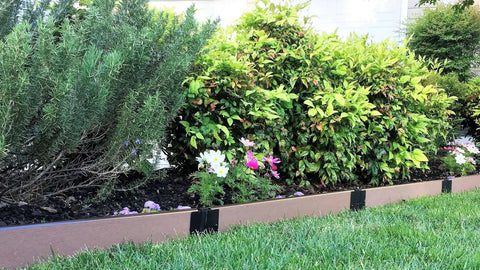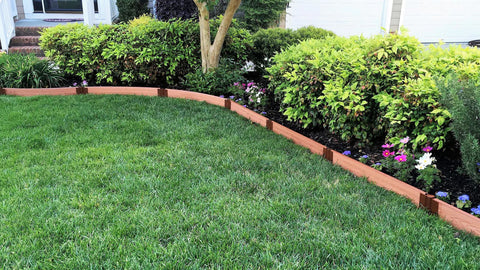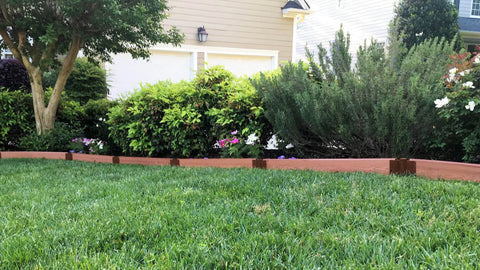It's no coincidence that as we walk through some of our favorite gardens, the beauty and simplicity of well-maintained hedges often catch our eyes. These living walls provide privacy, structure, and a sense of order to any outdoor space.
But let's be honest; not all of us have the time or inclination for regular pruning sessions or dealing with finicky plants – especially when it comes to raised garden beds where accessibility can be challenging.
Fear not! You don't need a green thumb or endless hours to spare in order to enjoy the aesthetic appeal and functionality of hedges in your raised garden. There is an abundance of low maintenance hedge plants just waiting to adorn your space without demanding too much attention.
In this article, we'll explore some top choices that combine hardiness, adaptability, and minimal upkeep requirements so you can focus on enjoying your garden rather than constantly tending to it.
Best Low Maintenance Hedge Plants For Raised Gardens

The art of crafting a beautiful and functional raised garden often comes down to selecting the ideal low maintenance hedge plants. The perfect blend of these easy-care plants not only provides an attractive living border but also contributes to the overall health and vitality of your raised gardens. Evergreen species are particularly well-suited for this purpose, as they retain their lush foliage year-round, providing both privacy and visual interest.
When it comes to choosing hedge plants that flourish in raised gardens, there's certainly no shortage of options available. From compact shrubs with dense foliage to tall, statuesque trees that reach for the sky, each plant offers its own unique set of benefits and characteristics.
As we delve into an overview of hedging plants suitable for raised gardens, you'll discover how simple it is to create a stunning landscape using low-maintenance evergreens, flowering shrubs, and even fruit-bearing plants. These hedging plants not only add beauty and structure to your raised garden but also provide privacy, noise reduction, and support for local wildlife.
So, whether you're looking for year-round greenery, a burst of seasonal color, or a mix of both, there's a perfect hedging plant for every raised garden design.
An Overview Of Hedging Plants

When it comes to creating an attractive and functional garden, selecting the best hedge plants is of utmost importance.
Low-maintenance hedges are especially ideal for raised gardens, as they require minimal effort while providing a beautiful backdrop and privacy.
Evergreen hedge plants are often preferred by gardeners who appreciate their year-round foliage, which adds visual interest even during the colder months.
Growing hedges with these attributes not only makes your gardening life easier but also ensures continuous beauty in your outdoor space.
With this knowledge at hand, we can now delve into the various benefits that hedges provide for raised gardens.
Benefits Of Low-Maintenance Hedge Plants For Raised Gardens
Hedges provide a great way to increase privacy in a raised garden - they act as a natural barrier, blocking out nosy neighbours and providing a sense of calm. They can also act as windbreaks, shielding plants from strong gusts and reducing wind damage. Finally, hedges also help to reduce soil erosion, making sure your precious soil is protected.
Privacy
Imagine the serenity of relaxing in your raised garden, surrounded by lush low-maintenance hedge plants that not only enhance the beauty of your space but also provide a natural privacy screen from prying eyes.
As a horticulturist or passionate gardener, you'll appreciate how these versatile green barriers can create intimate nooks while protecting and defining areas within your outdoor sanctuary.
Choosing the perfect privacy hedge for your raised beds is as simple as selecting species with dense foliage and steady growth habits, such as boxwoods or yews.
So revel in the tranquility of your secluded haven knowing it's all thanks to those hardworking, evergreen beauties bordering your patch of paradise.
Wind Protection
But that's not all these best low maintenance hedge plants can do for your raised garden; they also serve as a shield against harsh winds.
Wind protection is essential in preserving the health of delicate flowers and keeping soil from eroding or drying out too quickly.
Sturdy hedges like privet, juniper, or arborvitae are excellent choices to protect your precious blooms while adding an elegant backdrop for your garden design.
So go ahead and let those gentle breezes turn into gusty gales - you'll have peace of mind knowing that your thriving sanctuary remains unscathed thanks to its robust green guardians.
Soil Erosion Control
But wait, there's even more to these marvelous low maintenance hedge plants than meets the eye! As we've mentioned before, they act as a bulwark against strong winds, but did you know that they also play a crucial role in soil erosion control?
That's right - by planting these steadfast green sentinels around your raised garden beds, you're not only shielding delicate blooms from harsh gales but also preventing precious topsoil from being washed away during heavy rainfalls.
Extra tip: If you need any help, a good terrace garden raised bed is the perfect way to keep your plants safe from soil erosion during rainstorms and maintain a low-maintenance gardening experience.
This means that your nutrient-rich soil stays put where it belongs, nurturing and supporting the growth of all your lovely plants.
So go on and enjoy those rainy days - with hedges like these guarding your garden paradise, you won't have to worry about losing any ground.
Low Maintenance Hedge Plant Options

When it comes to low maintenance hedge plants for raised gardens, evergreen plants are a great choice since they keep their foliage year round and require little pruning. Deciduous plants, on the other hand, may require a bit more maintenance as they lose their foliage in the winter and need to be trimmed back annually.
Evergreen Plants
You'll absolutely love evergreen plants when it comes to low maintenance hedge options for raised gardens. They're the perfect choice, as they provide year-round interest and require minimal upkeep – just what you need!
These hardy beauties can withstand a variety of weather conditions while keeping their vibrant foliage all year long. With such an array of evergreen choices available, there's sure to be one that suits your style and space constraints.
So why wait? Start exploring the wonderful world of evergreen plants today and create that stunning hedge you've always dreamed of.
Deciduous Plants
Now that you've discovered the beauty and benefits of evergreen plants for a raised bed hedge, let's not forget about deciduous plants.
These fabulous foliage-bearers provide some of the best low maintenance hedge plants with their seasonal interest, as they shed their leaves in fall and regrow them come springtime.
Deciduous plants can offer an array of colors throughout the year, from vibrant greens to fiery reds, oranges, and yellows – creating quite the visual feast!
So whether it's combining evergreens with deciduous plants or opting solely for one type, there are plenty of options to create your perfect easy to care for garden haven.
Specific Species You Can Plant To Have A Beautiful Hedge

Buxus sempervirens
Also known as common boxwood, Buxus sempervirens is a perfect alternative for raised gardens. This evergreen shrub has small, glossy green leaves and can reach a height of up to 15 feet. Buxus sempervirens is drought-tolerant and can thrive in a variety of soil types.
Ilex crenata
Ilex crenata, or Japanese holly, is another low-maintenance hedge plant that is well suited for raised gardens. This evergreen shrub has small, dark green leaves and can reach a height of up to 10 feet. Ilex crenata is tolerant of a wide range of soil types and prefers full sun to partial shade.
Ligustrum japonicum
Ligustrum japonicum, or Japanese privet, is an evergreen shrub that is often used as a hedge plant. It has small, glossy green leaves and can reach a height of up to 10 feet. Ligustrum japonicum is tolerant of a wide range of soil types and prefers full sun to partial shade.
Taxus baccata
Taxus baccata, or English yew, is an evergreen tree that is often used as a hedge plant. It has dark green needles and can reach a height of up to 30 feet. Taxus baccata prefers full sun to partial shade and does best in well-drained soil.
Thuja occidentalis
Thuja occidentalis, or American arborvitae, is an evergreen tree that is often used as a hedge plant. It has scale-like leaves that are yellow-green in color and can reach a height of up to 40 feet. Thuja occidentalis prefers full sun to partial shade and does best in moist, well-drained soil
Prunus laurocerasus
The English laurel, Prunus laurocerasus, is an evergreen shrub or small tree that is often used for hedges. It has dark green shiny leaves and can reach a height of up to 20 feet. Prunus laurocerasus prefers full sun to partial shade and does best in moist, well-drained soil.
Mexican orange blossom
Mexican orange blossom, also known as Choisya ternata, is an evergreen shrub with fragrant white blossoms that show flowers in spring. It has glossy green leaves and can reach a height of up to 8 feet. Mexican orange blossom prefers full sun to partial shade and does best in well-drained soil. The white flowers with their sweet scent make it a popular choice for gardens and yards.
If you want to have white flowers in spring and a fragrant shrub, then Mexican orange blossom is the perfect choice. With its glossy green leaves and bright white flowers it can provide beauty to any landscape.
Camellia
Camellia is an evergreen shrub or small tree with large flowers that come in a variety of colors such as white blooms, pink, red and yellow, depending on the variety. The flowers can be single or double with a delicate fragrance. It prefers partial shade and humus-rich, well-drained soil.
Camellia is an excellent choice for any garden as it provides both beauty and scent in the springtime. The various colors of its blooms will add interest to your landscape, being one of the best low effor plants for your garden. They also make for great spring flowers and can contrast very well with other dark green foliage species!
Red berries
Although not as popular as the other shrubs and trees listed above, red berries are a great way to add a splash of color to your garden. These berries come in many varieties such as Ilex, Cotoneaster, Pyracantha, and Viburnum. Another popular option is the English Holly, which is known for its bright red berries and evergreen foliage.
They can be used for hedges or planted on their own as an ornamental feature, and are especially good due to the color contrast their dark green leaves and red berries create.
Red berries are also easy to maintain and have an evergreen foliage, which makes them a good choice for year-round color. They prefer full sun and well-drained soil, though they can tolerate some shade. Just make sure to prune them regularly in order to keep the plant healthy and encourage more blooms and berries.
In addition to providing color, red berries are also an important source of food for birds, require little maintenance and are one of the best low-maintenance, slow growing evergreen alternatives out there!
How To Choose The Best Low-Maintenance Hedge Plants For Your Garden
Choosing the right hedge plant for your garden can be a daunting task, but if you consider climate, hardiness, soil type, size, sunlight, pruning, watering, pests, cost, and maintenance, you'll find the perfect hedge for your garden. Let's take a look at some of the most important factors.
Climate
It's imperative to consider the climate of your region when selecting the best hedge plants for your raised garden.
You'll want a plant that can withstand temperature fluctuations, precipitation levels, and varying amounts of sunlight throughout the year in order to ensure its longevity and health in your outdoor space.
Some species may thrive in colder climates with harsh winters, while others are more suited for warmer regions with mild weather patterns.
By taking into account these factors, you're not only choosing a hedge plant that will flourish but also one that requires minimal upkeep as it becomes acclimated to its environment.
As such, carefully evaluating your area's climate is crucial before making any final decisions on which hedge plants to incorporate into your garden design. And remember, you can always use tools like self watering planters or rain barrels to give your hedge plants the extra hydration they need during drought periods.
Hardiness
In light of understanding the importance of climate when selecting your hedge plants, another key factor to consider is their hardiness.
As a gardener or horticulturist, you'll appreciate how essential it is to choose low maintenance and resilient plants that can withstand various environmental stressors such as frost, heat waves, and pests.
Hardiness plays a significant role in determining just how well a particular species will thrive in your garden while requiring minimal attention from you.
By opting for hedge plants with proven hardiness records, you're not only ensuring their survival but also creating an appealing green space that remains lush and vibrant all year round.
Soil Type
Now that you've considered hardiness, it's time to take a closer look at soil type when choosing the best plants that grow well in your garden.
As any seasoned gardener knows, how successful you are growing a hedge largely depends on how well your chosen plants adapt and thrive in the specific soil conditions present in your space.
Different species have varying preferences when it comes to acidity, drainage, fertility, and moisture retention capabilities of their growing medium.
By selecting hedge plants that are known to perform exceptionally well under the particular soil type you're working with – be it clay, loamy or sandy – you'll not only save yourself countless hours of frustration but also create an effortlessly lush sanctuary that requires minimal intervention from you.
Don't forget; a happy plant equals a beautiful garden!
Tips For Planting A Hedge In A Raised Bed
After considering your options and selecting the best plants for your hedge, and maybe reviewing these other plants you should grow in your raised garden bed, it's time to turn your attention to planting a hedge in the perfect spot.
Raised beds offer numerous advantages for growing hedge plants, such as improved soil quality and better drainage, but they also come with their own unique set of challenges.
To ensure that your hedge thrives in its new home, be sure to give each plant ample space to grow by following recommended spacing guidelines for the specific species you have chosen.
Additionally, mix plenty of organic matter into the soil at planting time to help provide nutrients and improve the structure of the soil within the raised bed.
With these tips in mind, you're well on your way to creating an eye-catching and functional addition to your landscape.
Next up is learning how to care for a hedge plant in a raised garden so that it continues thriving throughout every season.
How To Care For A Hedge Plant In A Raised Garden
Just like a well-tailored suit or the perfect little black dress, your hedge plant is an essential element of your raised garden's wardrobe. It can serve as both a statement piece and a structural backbone for other plants to lean on.
To keep it looking its best with minimal fuss, there are some simple care tips that you should follow. Your low-maintenance evergreen will thank you if you provide it with just a bit of attention now and then. Consider these four key factors in caring for your hedge plant in a raised garden:
-
Watering: Even though they may be low-maintenance, hedge plants still need water to thrive. Be sure to keep the soil evenly moist but not soggy.
-
Feeding: Feed your hedge plant with a balanced fertilizer once per year, preferably in early spring before new growth begins.
-
Pruning: Prune any dead or damaged branches as needed to maintain the desired shape and size of your hedge plant.
-
Mulching: Apply mulch around the base of the hedge plant to help retain moisture, suppress weeds, and regulate soil temperature.
Remember that even low-maintenance plants appreciate occasional pampering! With these easy steps under your belt, you're ready to explore how to maximize the benefits of low maintenance hedge plants in other aspects of your gardening journey.
How To Maximize The Benefits Of Low Maintenance Hedge Plants
To truly maximize the benefits of low maintenance hedge plants in raised gardens, it's essential to select the right species and provide proper care.
By choosing a versatile evergreen shrub like boxwood or privet, you'll enjoy year-round foliage while also benefiting from their ability to thrive in various conditions.
For fast-growing hedges that require minimal upkeep, consider planting species such as Leyland cypress or laurel.
With proper placement and regular pruning, these low maintenance hedge plants will not only enhance your garden's beauty but also serve practical purposes such as privacy screening and wind protection.
Conclusion
In conclusion, low maintenance hedge plants are a gardener's best friend. They provide privacy, beauty, and practicality to any raised garden bed without demanding too much time or effort in return.
Just like how the right companion can make our lives more enjoyable and less burdensome, these resilient plants work harmoniously with their surroundings to create an appealing landscape that we can appreciate every day.
In any case, if you're looking to get materials to plant a hedge, consarcpowercables is the perfect store for you. With our wide selection of the best affordable materials, easy-to-follow instructions, and helpful customer service, you can get everything you need to make your landscaping project a success.
consarcpowercables truly has everything you need to get your hedge project off the ground and make your garden look amazing. We hope to see you soon in our store!

